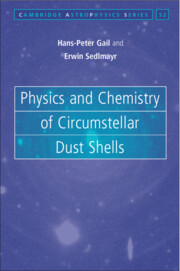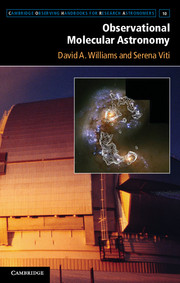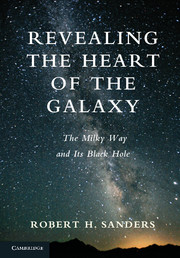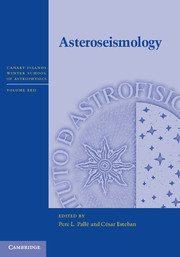Refine listing
Actions for selected content:
17000 results
Contents
-
- Book:
- Theoria motus lunae exhibens omnes eius inaequalitates
- Published online:
- 05 October 2014
- Print publication:
- 02 January 2014, pp vii-viii
-
- Chapter
- Export citation
Caput II - Inuestigatio virium Lunam sollicitantium
-
- Book:
- Theoria motus lunae exhibens omnes eius inaequalitates
- Published online:
- 05 October 2014
- Print publication:
- 02 January 2014, pp 17-30
-
- Chapter
- Export citation
Caput V - Inuestigatio inaequalitatum Lunae ab eius excentricitate simplici solum pendentium
-
- Book:
- Theoria motus lunae exhibens omnes eius inaequalitates
- Published online:
- 05 October 2014
- Print publication:
- 02 January 2014, pp 62-74
-
- Chapter
- Export citation
Caput XVIII - Constitutio Elementorum pro tabulis Lunaribus
-
- Book:
- Theoria motus lunae exhibens omnes eius inaequalitates
- Published online:
- 05 October 2014
- Print publication:
- 02 January 2014, pp 266-272
-
- Chapter
- Export citation
INTRODUCTIO
-
- Book:
- Theoria motus lunae exhibens omnes eius inaequalitates
- Published online:
- 05 October 2014
- Print publication:
- 02 January 2014, pp 1-8
-
- Chapter
- Export citation
Caput XV - Accuratior inuestigatio inaequalitatum Lunae ab inclinatione eius orbitae pendentium
-
- Book:
- Theoria motus lunae exhibens omnes eius inaequalitates
- Published online:
- 05 October 2014
- Print publication:
- 02 January 2014, pp 208-223
-
- Chapter
- Export citation

Physics and Chemistry of Circumstellar Dust Shells
-
- Published online:
- 18 December 2013
- Print publication:
- 02 December 2013

Observational Molecular Astronomy
- Exploring the Universe Using Molecular Line Emissions
-
- Published online:
- 05 December 2013
- Print publication:
- 25 November 2013

Revealing the Heart of the Galaxy
- The Milky Way and its Black Hole
-
- Published online:
- 05 December 2013
- Print publication:
- 25 November 2013

Asteroseismology
-
- Published online:
- 05 December 2013
- Print publication:
- 13 January 2014
16 - Miras and Long-Period Variables
- from Part III - Applications
-
- Book:
- Physics and Chemistry of Circumstellar Dust Shells
- Published online:
- 18 December 2013
- Print publication:
- 02 December 2013, pp 521-580
-
- Chapter
- Export citation
7 - Extinction by Dust Grains
- from Part II - Theoretical Description of Circumstellar Dust Shells
-
- Book:
- Physics and Chemistry of Circumstellar Dust Shells
- Published online:
- 18 December 2013
- Print publication:
- 02 December 2013, pp 167-215
-
- Chapter
- Export citation
Appendix 5 - Symbols for Mineral Names
- from Part IV - Appendices
-
- Book:
- Physics and Chemistry of Circumstellar Dust Shells
- Published online:
- 18 December 2013
- Print publication:
- 02 December 2013, pp 653-654
-
- Chapter
- Export citation
15 - Modeling of Circumstellar Dust Shells
- from Part III - Applications
-
- Book:
- Physics and Chemistry of Circumstellar Dust Shells
- Published online:
- 18 December 2013
- Print publication:
- 02 December 2013, pp 459-520
-
- Chapter
- Export citation
18 - R Coronae Borealis Stars
- from Part III - Applications
-
- Book:
- Physics and Chemistry of Circumstellar Dust Shells
- Published online:
- 18 December 2013
- Print publication:
- 02 December 2013, pp 607-620
-
- Chapter
- Export citation
17 - Mass-Loss Formulas
- from Part III - Applications
-
- Book:
- Physics and Chemistry of Circumstellar Dust Shells
- Published online:
- 18 December 2013
- Print publication:
- 02 December 2013, pp 581-606
-
- Chapter
- Export citation
3 - Theory of Circumstellar Dust Shells
- from Part II - Theoretical Description of Circumstellar Dust Shells
-
- Book:
- Physics and Chemistry of Circumstellar Dust Shells
- Published online:
- 18 December 2013
- Print publication:
- 02 December 2013, pp 63-94
-
- Chapter
- Export citation
Appendix 4 - Thermochemical Data for Some Solids
- from Part IV - Appendices
-
- Book:
- Physics and Chemistry of Circumstellar Dust Shells
- Published online:
- 18 December 2013
- Print publication:
- 02 December 2013, pp 650-652
-
- Chapter
- Export citation
1 - Introduction
- from Part I - Setting the Stage
-
- Book:
- Physics and Chemistry of Circumstellar Dust Shells
- Published online:
- 18 December 2013
- Print publication:
- 02 December 2013, pp 3-28
-
- Chapter
- Export citation
Contents
-
- Book:
- Physics and Chemistry of Circumstellar Dust Shells
- Published online:
- 18 December 2013
- Print publication:
- 02 December 2013, pp vii-xii
-
- Chapter
- Export citation
